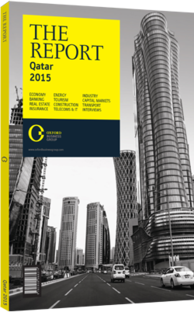Lim Hng Kiang, Singapore Minister of Trade and Industry: Interview

What is the current state of economic relations between the GCC and Singapore?
LIM: Our relations are growing from strength to strength. The GCC and Singapore have long-standing ties that stretch many generations. As we move into the 21st century, our relations, including economic ties, are growing stronger. Indeed, Singapore traded more than $50.4bn worth of goods with the GCC in 2013, making the GCC states our fifth-largest trading partner. This is not surprising given the GCC’s oil wealth, as well as Singapore’s large petrochemicals sector, with more than 75% of our trade in oil products. What is more promising is that trade in non-oil products has jumped by more than 50% since 2009.
Which sectors have seen an immediate impact as a result of the elimination of tariffs under the GCC-Singapore Free Trade Agreement (GSFTA) in 2013?
LIM: Singapore is the first country outside of the Middle East to have an FTA with the GCC. Under the agreement, the vast majority of Customs tariffs levied for goods entering each other’s territories have been removed. Singapore and GCC companies have also gained preferential market access to professional, engineering and business services, among others. We are grateful that GCC countries have agreed to recognise the halal certification administered by Singapore’s Islamic Religious Council, which opens up further opportunities to work together to expand trade in halal food products. GCC exporters of halal-certified products can expect smoother and faster clearance into Singapore, and vice versa. Recognition will also boost people flows between both sides.
In what areas do you see potential for collaboration between Singaporean and GCC companies?
LIM: Having no natural resources, Singapore and our firms have, since independence, focused on developing strong capabilities in city and urban planning, and water solutions and logistics, among other areas. In recent years, our companies have deployed their expertise in assisting GCC countries with their economic diversification efforts. In Saudi Arabia, for example, Sembcorp is exploring the development of a maritime yard with Saudi Aramco. In Oman, Sembcorp is also developing centralised utilities facilities such as power, water and sewerage for Duqm Special Economic Zone. In addition, Singapore Technologies Marine is working with the Royal Navy of Oman to build offshore patrol vessels. Keppel Seghers Engineering, meanwhile, is operating Doha North Sewage Treatment Plant and the Domestic Solid Waste Management Centre in Qatar. We encourage more Singapore companies to work with their GCC counterparts in similar collaborations.
How can the GCC use Singapore as a gateway to other member states in the Association of South-East Asian Nations (ASEAN)?
LIM: Countries in ASEAN and the GCC have several complementary strengths and can gain much from closer economic relations. Both ASEAN and the GCC enjoy strong economic growth, with a combined GDP of more than $4.37trn. ASEAN’s GDP is projected to grow 4.7% in 2014, comparable to 4.5% for the GCC. This is above the expected global growth average of 3.7%.
Additionally, both GCC and ASEAN member states have relatively young populations, with one-third of ASEAN’s and half of the GCC’s population under the age of 29. Further, ASEAN can serve as a reliable supplier of raw materials, foodstuffs, manufactured goods and services. On the other hand, ASEAN business interest in the GCC is also rising due to projects such as World Expo 2020 in Dubai and the 2022 FIFA World Cup in Qatar. The GSFTA offers a valuable route to further strengthen trade ties as, it links the GCC, via Singapore, to the intra-regional ASEAN Free Trade Area.
Tourism is another area of opportunity, as Gulf carriers have increased the frequency of their flights to major hubs in South-east Asia, including Singapore. We should explore new ways to boost tourism links.
You have reached the limit of premium articles you can view for free.
Choose from the options below to purchase print or digital editions of our Reports. You can also purchase a website subscription giving you unlimited access to all of our Reports online for 12 months.
If you have already purchased this Report or have a website subscription, please login to continue.

